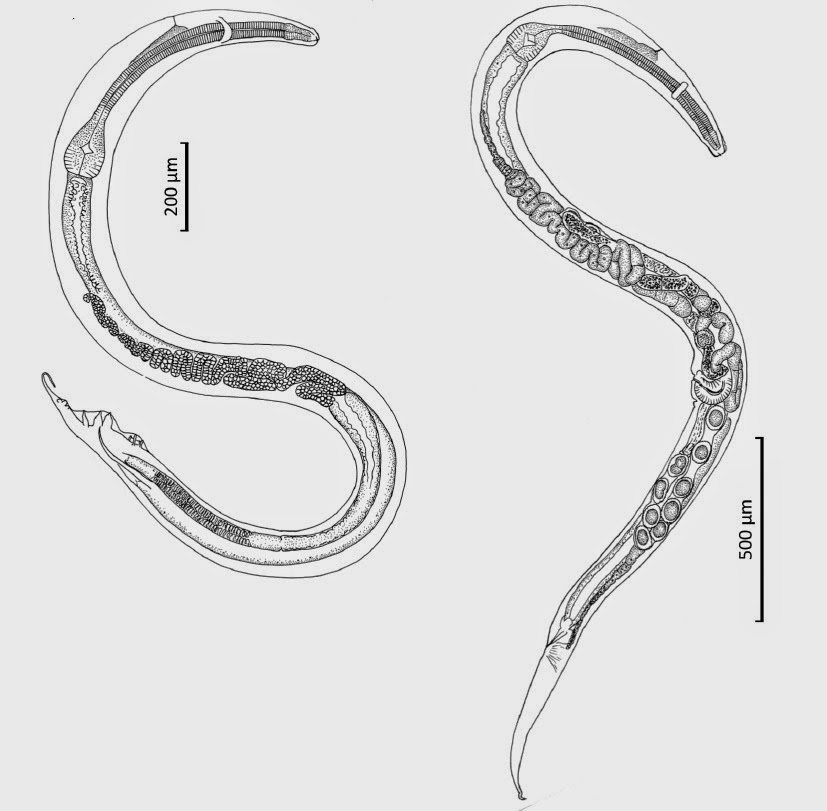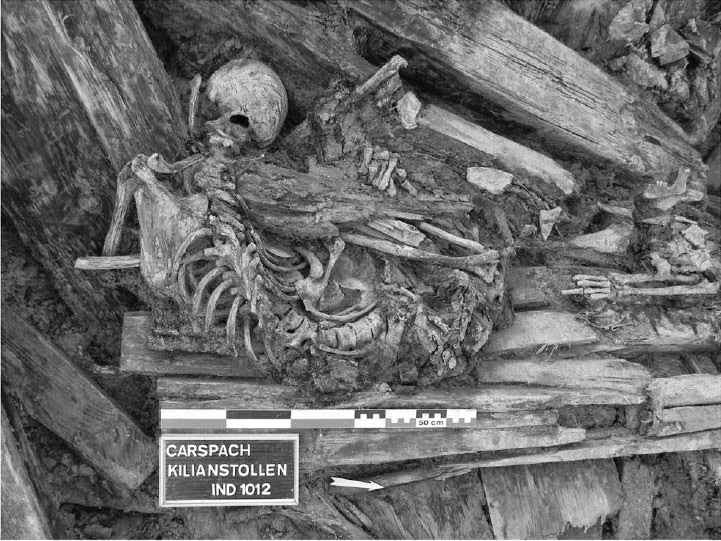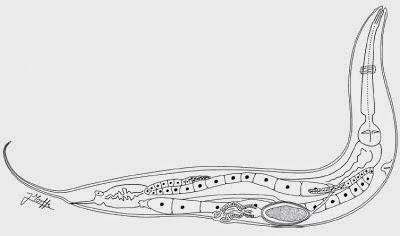Parasitic Nematodes of the superfamily Heterakoidea are typified by
having three lips, an esophagus with a valved bulb, thick shelled eggs and a
pre-anal sucker on the males. They are typically parasites of the digestive
tracts of small vertebrates, which do not require an intermediate host (i.e.
the species only needs to infect one species of hosts, rather than infecting
different species at different stages in its life cycle), though some species
have been shown to infect Earthworms opportunistically. The superfamily is
divided into four families, the Ascaridiidae, which infect Birds, the Aspidoderidae
which infect Edentates (Sloths, Anteaters etc.) and Rodents in South America,
except for one genus, Narsingiella,
which infects Toads in India, the Kiwinematidae, which infect Birds and
Reptiles in New Zealand, and Mole Rats in the Old World, and the Heterakidae,
which predominantly infects Birds, but which also contains two genera, Gireterakis andHeterakis which contain Mammal-infecting species.
In a paper published in the journal Zootaxa on 4 November 2014,
Hideo Hasegawa of the Department of Biology at Oita University, Kartika Dewi of
the Zoology Division at Museum Zoologicum Bogoriense and Mitsuhiko Asakawa of the
Department of Pathobiology at Rakuno Gakuen University describe a new species of
Heterakoid Nematode found infecting a Large-bodied Shrew Rat, Echiothrix centrosa, during a survey of
Nematodes infecting endemic Rodents in Sulawesi.
The new species is placed in the family Heterakidae, but assigned to
a new genus, Musserakis, named in
honour of the Mammalogist Guy Musser, an
expert on the Rodents of Sulawesi, and given the specific name sulawesiensis, meaning ‘from Sulawesi’.
The species is described from 11 male and 11 female specimens. The males range
from 2.61 mm to 3.47 mm in length.
Musserakis sulawesiensis (left) male and (right) female. Hasegawa et al. (2014).
Scanning electron micrographs of cephalic portion of Musserakis sulawesiensis (19–21) Female
with usual cephalic portion, in apical (19), subapical (20), and apico-lateral
(21) views. (22) Female with inflated cephalic portion, apico-lateral
view. Hasegawa et al. (2014).
See also…
The science of palaeoparasitology involves the study of parasite
remains from palaeontological and archaeological sites. This rarely involves
the recovery...
Nematodes are probably the most numerous and specious group of animals
on Earth, though relatively few species have actually been described.
The title of...
European Eels, Anguilla anguilla, have a complex life-cycle; they
hatch from eggs in the Sargasso Sea...
Follow Sciency Thoughts on Facebook.





